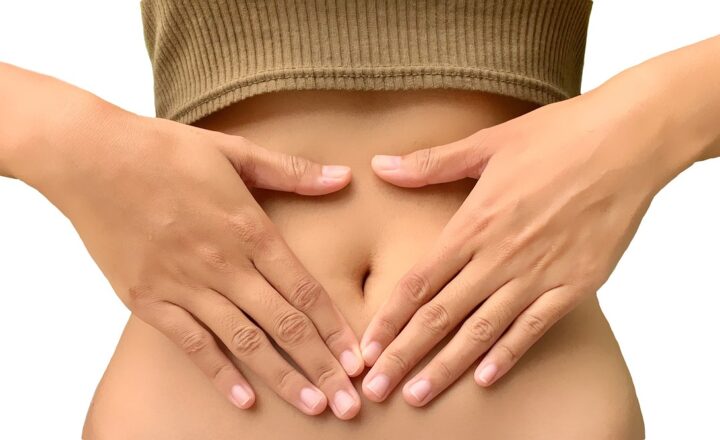The Science Behind the Keto Diet: How It Works and What You Need to Know
October 18, 2024

The ketogenic, or keto, diet has gained immense popularity in recent years for its ability to promote rapid weight loss, improve mental clarity, and even help manage certain health conditions. But what exactly is the keto diet, and how does it work? Rooted in science, the keto diet relies on a metabolic state called ketosis, where the body burns fat for fuel instead of carbohydrates.
In this article, we’ll explore the science behind the keto diet, how it affects your metabolism, its potential benefits and risks, and whether it’s the right choice for your health and fitness goals.
1. What is the Keto Diet? A Low-Carb, High-Fat Approach
The keto diet is a high-fat, low-carbohydrate diet that shifts the body’s primary energy source from carbohydrates to fats. By drastically reducing carbohydrate intake (typically to less than 50 grams per day), the body is forced into a metabolic state called ketosis, where it burns fat for energy instead of glucose derived from carbs.
Key Macronutrient Breakdown:
- Fat: 70–80% of daily calories
- Protein: 20–25% of daily calories
- Carbohydrates: 5–10% of daily calories
This approach is in stark contrast to the standard high-carb diet, where carbohydrates provide the majority of energy.
2. The Science of Ketosis: How the Body Burns Fat for Energy
Under normal conditions, the body’s preferred source of energy is glucose, which comes from carbohydrates like bread, pasta, and fruits. However, when carbohydrate intake is drastically reduced, glucose levels drop, and the liver starts producing molecules called ketones from fat. These ketones become the new primary energy source for the body, especially the brain, which cannot directly use fat for energy.
Ketosis:
Ketosis is a metabolic state where the body burns stored fat for energy, leading to the production of ketones. This process occurs when glucose (sugar) levels are low, such as during fasting or on a very low-carbohydrate diet like keto.
- Key Ketones: Acetoacetate, beta-hydroxybutyrate (BHB), and acetone.
- Ketone Production: As the liver breaks down fatty acids, it produces ketones, which can be used by the brain, muscles, and other tissues for energy.
Ketosis typically begins after 2–4 days of consuming fewer than 50 grams of carbohydrates per day, depending on the individual’s metabolism and activity level.
3. Health Benefits of the Keto Diet: What the Research Says
While originally developed to help manage epilepsy, the keto diet has been associated with a variety of health benefits, particularly for those looking to lose weight or manage certain medical conditions.
1. Weight Loss
The keto diet is often praised for its ability to promote fast weight loss. This occurs because the body uses fat as its primary energy source, and ketosis helps suppress appetite by regulating hunger hormones like ghrelin.
- Fat Burning: As the body burns fat for energy, it leads to a reduction in fat stores, resulting in weight loss.
- Caloric Deficit: Many people naturally consume fewer calories on the keto diet due to the appetite-suppressing effects of fat and protein.
2. Improved Blood Sugar Control
For people with type 2 diabetes or insulin resistance, the keto diet may help stabilize blood sugar levels by reducing carbohydrate intake and insulin spikes. Studies have shown that low-carb diets like keto can lower hemoglobin A1c levels and improve overall insulin sensitivity.
3. Enhanced Mental Clarity and Focus
Many people report improved mental clarity and focus on the keto diet. This is because ketones provide a steady source of energy for the brain, avoiding the blood sugar fluctuations associated with high-carb diets.
- Neuroprotective Effects: There is also some evidence that ketosis may have neuroprotective effects, potentially benefiting individuals with neurodegenerative diseases such as Alzheimer’s or Parkinson’s disease.
4. Reduced Inflammation
The keto diet may help reduce chronic inflammation in the body, which is linked to various health conditions, including heart disease, cancer, and autoimmune disorders.
- Anti-Inflammatory Effects: Ketones themselves may have anti-inflammatory properties, and reducing refined carbohydrates can further decrease inflammation.
5. Improved Cholesterol and Heart Health
Although a high-fat diet may seem counterintuitive for heart health, research suggests that the keto diet can improve cholesterol levels by increasing HDL (good) cholesterol and decreasing triglycerides. Some studies have shown improvements in cardiovascular risk factors for individuals on the keto diet.
4. Potential Risks and Drawbacks of the Keto Diet
While the keto diet offers many benefits, it’s not without its risks and challenges. Like any diet, it may not be suitable for everyone, especially if followed for an extended period without proper medical supervision.
1. The Keto Flu
When transitioning into ketosis, some people experience a set of temporary symptoms known as the “keto flu.” These symptoms, which typically occur within the first week, include fatigue, headaches, nausea, dizziness, and irritability. The keto flu happens as the body adjusts to using fat and ketones for fuel instead of glucose.
- How to Alleviate It: Drinking plenty of water, replenishing electrolytes (sodium, potassium, magnesium), and getting enough sleep can help reduce these symptoms.
2. Nutrient Deficiencies
Since the keto diet restricts many carbohydrate-rich foods like fruits, vegetables, and whole grains, it can lead to nutrient deficiencies if not carefully managed. Important nutrients like fiber, vitamins C and E, and certain minerals may be lacking.
- How to Avoid: Incorporate low-carb vegetables (such as leafy greens, broccoli, and cauliflower) and consider taking supplements to meet nutritional needs.
3. Impact on Long-Term Heart Health
While the keto diet can improve certain heart health markers, the long-term effects of a high-fat diet on cardiovascular health are still being studied. There’s concern that high intake of saturated fats could negatively affect heart health for some individuals.
- Moderation of Fats: To avoid potential risks, it’s recommended to focus on healthy fats like avocados, nuts, seeds, olive oil, and fatty fish while limiting processed and saturated fats.
4. Difficulty in Sustaining
The restrictive nature of the keto diet can make it challenging for some people to stick to long term. The elimination of many staple foods, such as bread, pasta, and most fruits, can lead to frustration, social difficulties, and potential yo-yo dieting.
5. Who Should Avoid the Keto Diet?
The keto diet may not be suitable for everyone, especially those with certain medical conditions. It’s essential to consult with a healthcare provider before starting the diet, particularly for individuals with:
- Liver or Kidney Disease: The high fat and protein intake may put additional strain on the liver or kidneys.
- Gallbladder Issues: People who have had their gallbladder removed or who have gallbladder problems may struggle to digest the high-fat content of the keto diet.
- Pregnancy: Pregnant women should avoid the keto diet, as adequate carbohydrate intake is necessary for fetal development.
6. How to Start the Keto Diet: Tips for Success
If you’re considering trying the keto diet, it’s important to prepare for a smooth transition into ketosis and plan meals carefully to avoid nutritional deficiencies. Here are some tips to help you get started:
1. Calculate Your Macros
Before starting, calculate how many grams of fat, protein, and carbs you should eat each day to stay within the ketogenic macronutrient range. Many online keto calculators can help you figure this out based on your age, weight, and activity level.
2. Stock Up on Keto-Friendly Foods
Focus on purchasing healthy fats like avocados, nuts, olive oil, butter, and fatty fish. Low-carb vegetables, such as leafy greens, zucchini, and broccoli, should also be a staple. Protein sources like meat, eggs, and cheese are key components of keto meals.
3. Monitor Your Ketosis
To ensure you’re in ketosis, you can use urine or blood test strips to measure ketone levels. This will help you track your progress and ensure your body is using fat as its primary fuel source.
4. Stay Hydrated and Replenish Electrolytes
The keto diet can lead to dehydration and a loss of electrolytes, particularly in the early stages. Drink plenty of water and consider adding a pinch of salt to your meals or drinking bone broth to maintain electrolyte balance.
5. Plan for the Long-Term
For many, the keto diet is not meant to be a long-term lifestyle. Some people cycle in and out of keto, while others transition to a more moderate low-carb diet over time. It’s essential to have a plan for maintaining healthy eating habits after reaching your desired goals.
Conclusion: Is the Keto Diet Right for You?
The ketogenic diet has helped many people achieve significant health and weight loss goals, but it’s not a one-size-fits-all solution. While it offers benefits such as rapid fat loss, improved blood sugar control, and mental clarity, the restrictive nature of the diet and potential side effects make it challenging for some people.
Ultimately, the best diet is one that is sustainable, nutritionally balanced, and tailored to your individual needs and lifestyle. If you’re considering the keto diet, consult with a healthcare professional to ensure it’s a safe and effective choice for your health goals.








